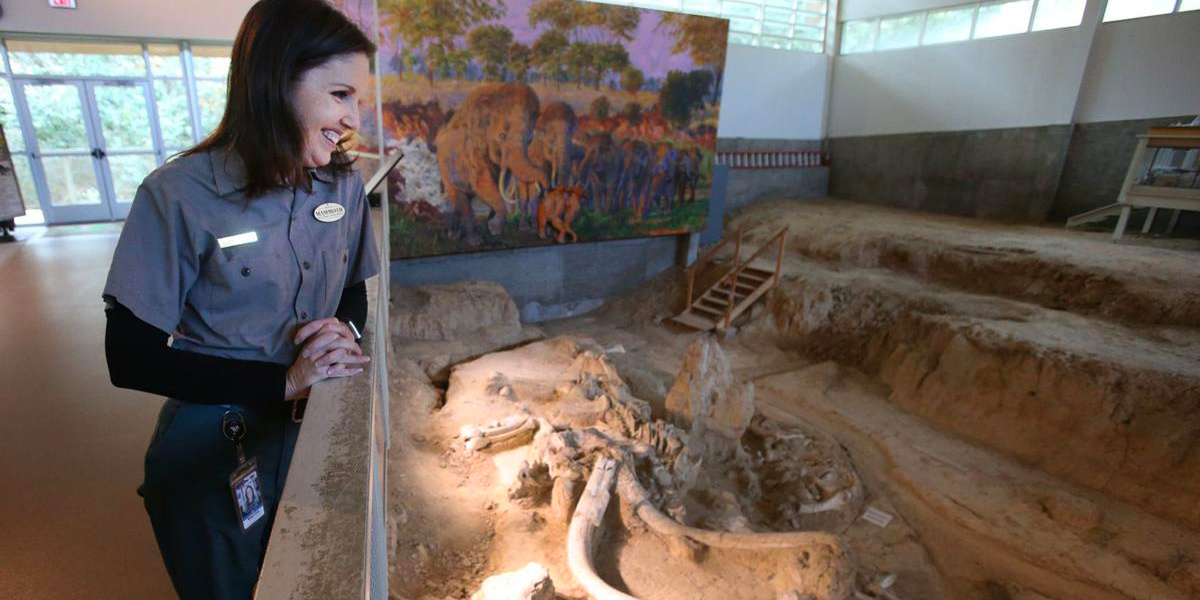Waco Mammoth National Monument celebrates 5 years as part of the National Park Service

Over 40 years ago, Paul Barron and Eddie Bufkin set out to collect arrowheads and fossils near the Bosque River. To their surprise, they found something much larger — what is today known as the Waco Mammoth National Monument.
Since its discovery in 1978, the site has revealed 24 adult and juvenile Columbian mammoths, a saber-toothed cat, a giant tortoise, a Western camel and an American alligator. For the next 30 years, Baylor professors led the way in studying and preserving what was found at the site. In the mid 2000s, Baylor and the City of Waco began working together to make the site accessible to the public for viewing; that debuted as the Waco Mammoth Site in 2009 before being accepted into the National Park System (NPS) as the Waco Mammoth National Monument (WMNM) on July 10, 2015.
It’s no question as to why the Waco mammoth site received such an honor; the NPS had been impressed with the level of care and research demonstrated by the site’s staff for several years.
“Once we were included in the National Park Service, we received instant validation and credibility for the park and its science,” says Raegan King, site manager for the WMNM. “The simple exposure the National Park System creates for its parks on a nationwide level is invaluable in the eyes of the operational partnership that keeps WMNM functioning and growing today.”
For the last several years, more than 100,000 guests have flocked to the park each year to hear tales of the mammoths and other Ice Age animals.
“With the designation, we were able to expand our hours and create jobs through the City of Waco and the NPS — including 10 paleontologists,” says King. The site’s first in-house paleontologist started in January; before COVID-19 limitations, she would often work where visitors could see her, cleaning fossils and even answering questions right there on-site. Baylor professors also remain
The NPS designation also includes Baylor’s Mayborn Museum. Since its establishment, WMNM has partnered with the Mayborn to support ongoing research and to provide educational opportunities to the public, like “Mayborn at Home” and “Meet the Mayborn.” The museum houses fossils from WMNM and serves as a repository for the National Park Service. Mayborn director Charlie Walter represents Baylor on the Waco Mammoth Foundation Board.
“The Foundation raised the original funding to build the dig shelter over the fossils and continues to support the site by raising funds to support projects at the Monument,” says Walter. “We ultimately hope to work with the City and NPS to build a new Visitor Center and Children’s Discovery Center on the site in the future.”
Sic ’em, Waco Mammoth National Monument!

